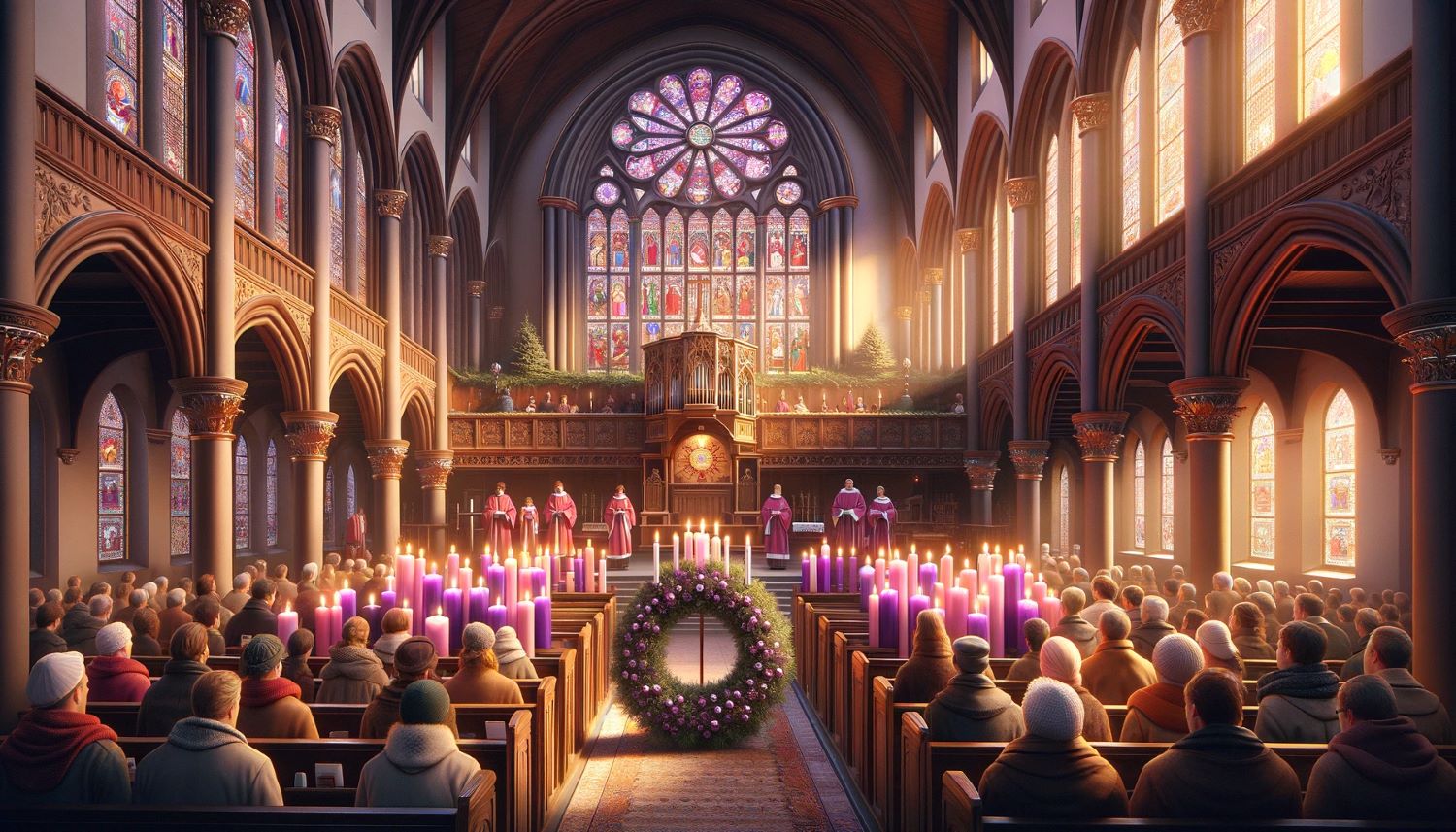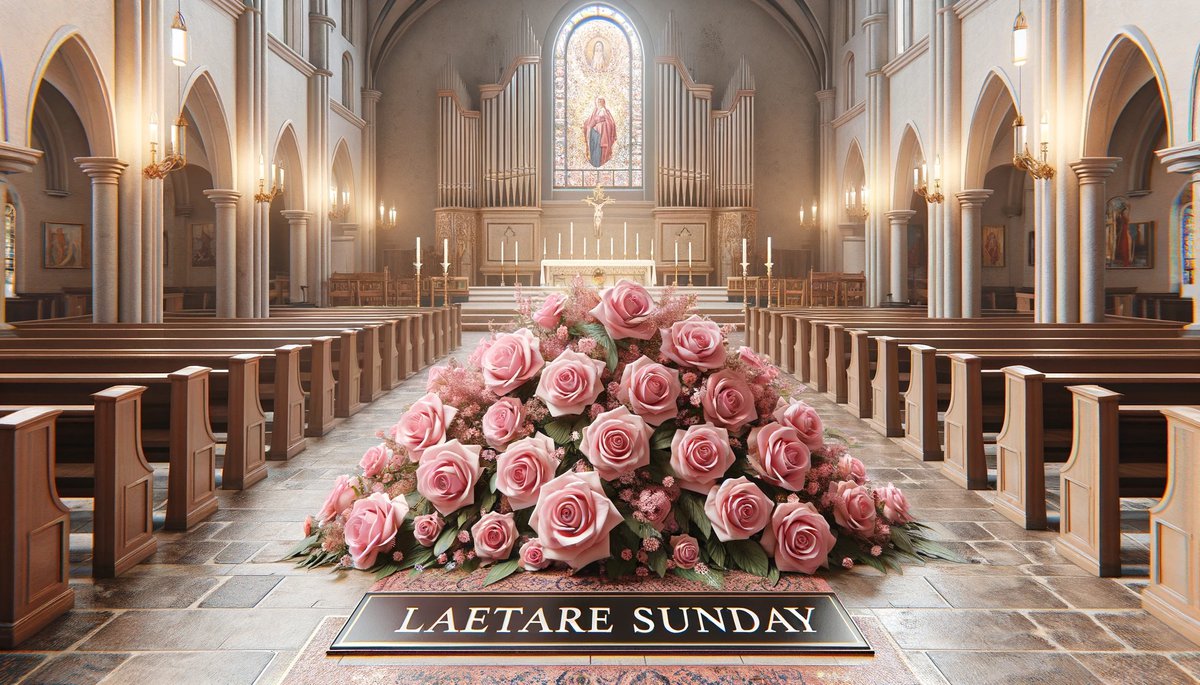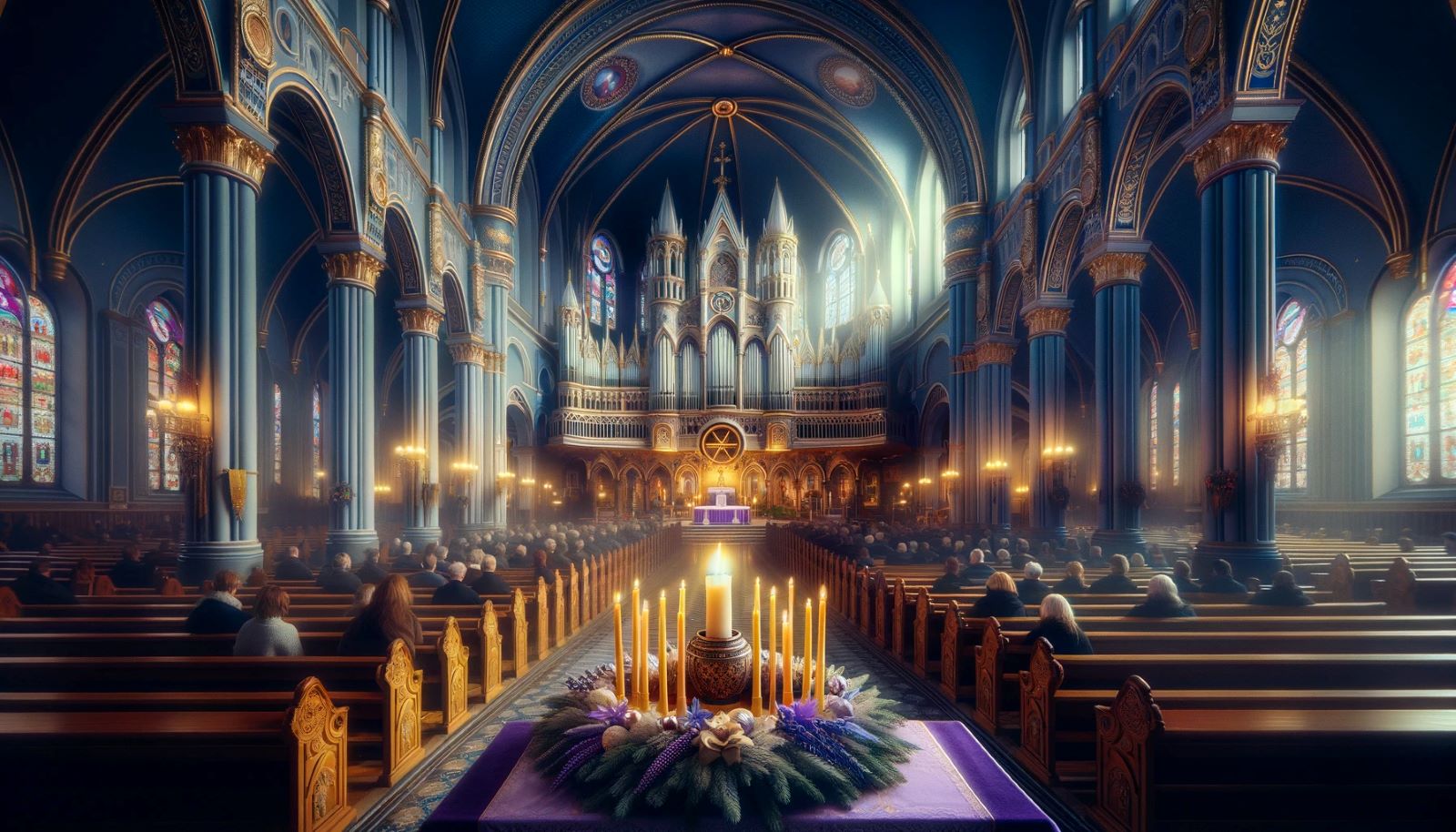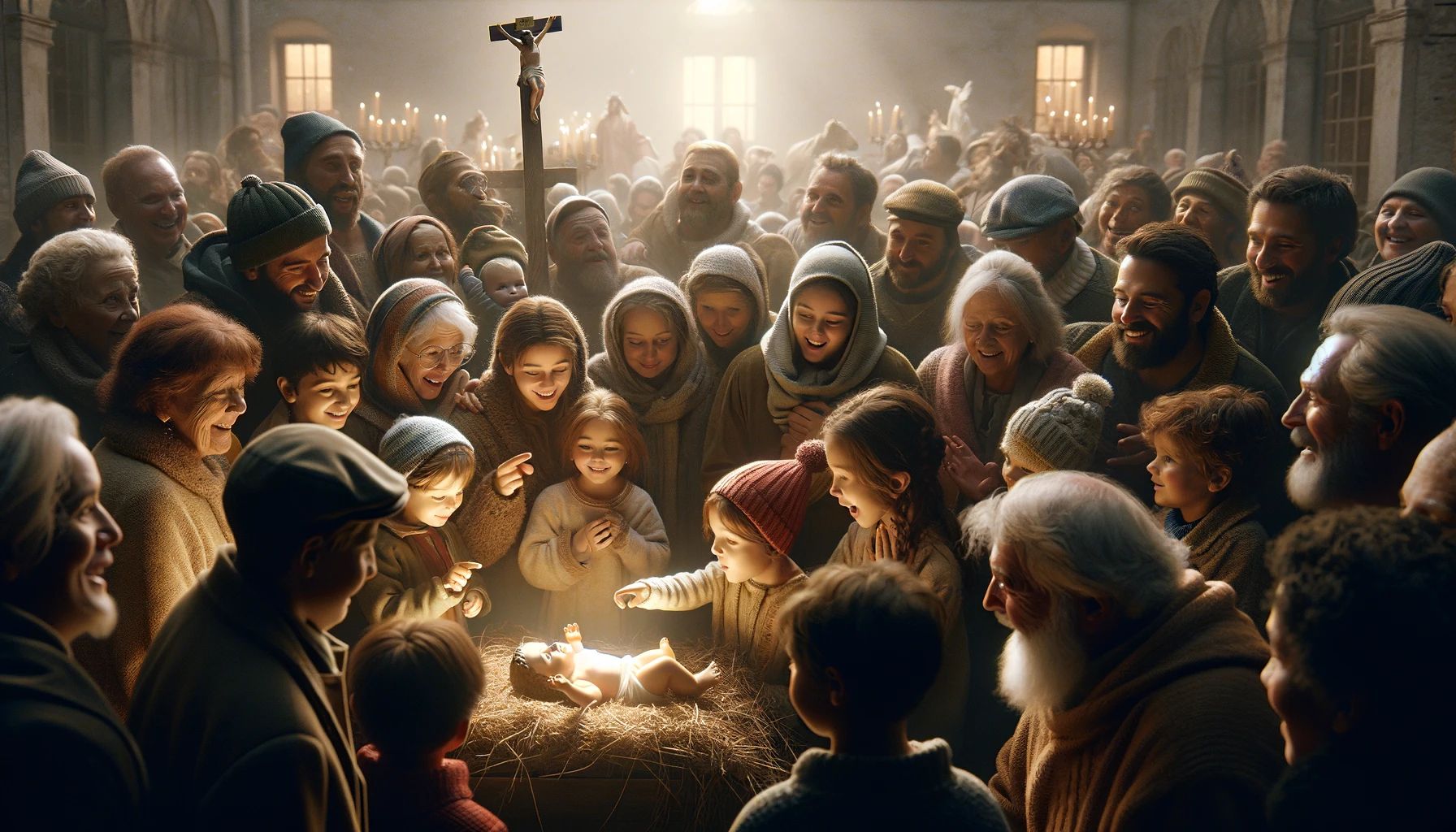Home>Special Themes>What Is The 3rd Sunday In Advent Called


Special Themes
What Is The 3rd Sunday In Advent Called
Published: February 14, 2024
Ericka Andersen, an editor at Christian.net, expertly merges digital strategy with content creation, focusing on faith and societal issues. Her communication skills enhance the platform's engaging narratives, fostering meaningful dialogue on belief's impact on society.
Discover the significance of the 3rd Sunday in Advent, also known as Gaudete Sunday, and its special themes. Learn about the traditions and customs associated with this important day.
(Many of the links in this article redirect to a specific reviewed product. Your purchase of these products through affiliate links helps to generate commission for Christian.net, at no extra cost. Learn more)
Table of Contents
Introduction
Advent, a word derived from the Latin "adventus," meaning "coming" or "arrival," marks the beginning of the liturgical year in the Christian calendar. It is a period of joyful anticipation and preparation for the celebration of the birth of Jesus Christ. The Advent season typically spans four Sundays before Christmas, serving as a time of reflection, hope, and spiritual readiness.
During this sacred time, Christians around the world engage in various traditions and rituals that symbolize the themes of hope, peace, joy, and love. Each Sunday of Advent holds special significance, with the third Sunday holding a unique place in the hearts of believers.
As we delve into the essence of the 3rd Sunday in Advent, it's essential to understand the overarching purpose of this season and the profound impact it has on the faithful. The 3rd Sunday in Advent, also known as Gaudete Sunday, embodies a spirit of rejoicing and exudes a sense of anticipation for the imminent celebration of the birth of Jesus.
This article aims to unravel the rich tapestry of traditions, symbolism, and spiritual significance associated with the 3rd Sunday in Advent. By exploring its historical roots, traditional customs, and the name by which it is known, we can gain a deeper appreciation for the profound meaning behind this pivotal moment in the Advent season. Let's embark on a journey to uncover the essence of the 3rd Sunday in Advent and the profound impact it holds within the hearts of believers worldwide.
Read more: What Does The 3rd Candle Of Advent Represent
The Meaning of Advent
Advent, a season of profound significance in the Christian faith, serves as a period of spiritual preparation and anticipation for the celebration of the birth of Jesus Christ. Rooted in the Latin word "adventus," which translates to "coming" or "arrival," Advent encompasses a time of reflection, hope, and joyful expectation. It symbolizes the dual nature of this season, as it not only commemorates the historical event of Jesus' birth but also underscores the anticipation of his second coming.
The Advent season typically spans four Sundays before Christmas, marking the beginning of the liturgical year in the Christian calendar. Each Sunday of Advent is characterized by the lighting of a candle on an Advent wreath, with each candle representing a specific theme: hope, peace, joy, and love. As the weeks progress, an additional candle is lit, signifying the increasing brightness and anticipation of the imminent arrival of Christ.
Beyond the symbolic lighting of candles, Advent is a time for believers to engage in introspection, prayer, and spiritual readiness. It encourages individuals to realign their hearts and minds, fostering a sense of anticipation for the fulfillment of God's promises. The season also emphasizes the themes of longing, waiting, and hope, serving as a poignant reminder of the profound impact of Jesus' birth on humanity.
Furthermore, Advent is a period of heightened spiritual devotion, encouraging believers to seek a deeper connection with their faith and to prepare their hearts to receive the transformative message of Christmas. It serves as a time to reflect on the significance of the Incarnation, the embodiment of God in human form, and the profound implications of this divine act for humanity.
In essence, the meaning of Advent extends far beyond the anticipation of Christmas Day. It encapsulates a journey of spiritual renewal, hopeful expectation, and a profound sense of longing for the fulfillment of God's promises. As believers embark on this sacred season, they are invited to immerse themselves in the rich tapestry of traditions and rituals that embody the essence of Advent, fostering a deeper connection with their faith and a renewed sense of hope for the future.
The Tradition of Advent Sundays
The tradition of Advent Sundays holds a central place in the observance of the Advent season, serving as a poignant reminder of the themes of hope, peace, joy, and love. Each Sunday of Advent is marked by the lighting of a candle on an Advent wreath, a cherished symbol that embodies the spiritual journey towards the celebration of Christ's birth.
The first Sunday of Advent heralds the beginning of the liturgical year, with the lighting of the first candle representing the theme of hope. This act symbolizes the anticipation of the coming of the Messiah and the hope that permeates the hearts of believers as they embark on this sacred season. As the second Sunday unfolds, the lighting of the second candle signifies the theme of peace, evoking a sense of tranquility and harmony as the faithful prepare their hearts for the arrival of the Christ child.
The third Sunday in Advent holds a special place in the hearts of believers, as it is marked by the lighting of the third candle, known as the "Shepherd's Candle" or "Gaudete Sunday." This candle represents joy, signifying the rejoicing and exuberance that accompanies the imminent arrival of Jesus. It serves as a profound reminder of the joyous news proclaimed by the angels to the shepherds, heralding the birth of the Savior and the transformative impact of this divine event on humanity.
As the Advent season progresses, the fourth Sunday culminates in the lighting of the fourth candle, symbolizing love. This act encapsulates the profound message of God's unconditional love for humanity, embodied in the gift of His Son, Jesus Christ. The lighting of all four candles on the Advent wreath represents the culmination of the spiritual journey, as believers prepare to celebrate the birth of Jesus on Christmas Day.
Beyond the symbolic lighting of candles, Advent Sundays are characterized by a sense of eager anticipation and spiritual reflection. Believers engage in prayer, scripture readings, and communal worship, fostering a deep sense of connection with the profound themes of Advent. The tradition of Advent Sundays serves as a poignant reminder of the transformative power of Christ's birth and the enduring hope, peace, joy, and love that emanate from this sacred event.
In essence, the tradition of Advent Sundays encapsulates a journey of spiritual renewal, anticipation, and joyful expectation, inviting believers to immerse themselves in the rich symbolism and profound significance of the Advent season. It serves as a testament to the enduring legacy of Christ's birth and the timeless message of hope and redemption that continues to resonate with believers across the globe.
The Significance of the 3rd Sunday in Advent
The 3rd Sunday in Advent holds profound significance within the liturgical calendar, embodying a spirit of rejoicing and anticipation as believers journey towards the celebration of Christ's birth. This pivotal moment, also known as Gaudete Sunday, derives its name from the Latin word "gaudete," which translates to "rejoice." It serves as a poignant reminder of the joyous anticipation that permeates the hearts of the faithful as they prepare to commemorate the birth of Jesus.
Amidst the solemnity of the Advent season, the 3rd Sunday stands out as a beacon of hope and exuberance, symbolized by the lighting of the pink candle on the Advent wreath. This vibrant hue represents a shift in tone, signaling a brief respite from the penitential nature of the season and inviting believers to embrace a spirit of joy and celebration. The rose-colored candle, often referred to as the "Shepherd's Candle," evokes the image of the shepherds who received the angelic proclamation of Christ's birth, igniting a sense of jubilation and anticipation for the Savior's arrival.
Beyond its symbolic representation, the 3rd Sunday in Advent serves as a powerful reminder of the transformative impact of Christ's imminent birth. It encapsulates the profound message of God's abiding love for humanity, heralding a season of rejoicing and gratitude for the gift of salvation. This Sunday offers a moment of respite, allowing believers to pause and reflect on the profound joy that emanates from the promise of redemption and the fulfillment of God's divine plan.
Moreover, the 3rd Sunday in Advent serves as a spiritual milestone, marking the halfway point in the Advent season and infusing believers with renewed hope and anticipation. It beckons individuals to embrace a sense of inner joy, transcending the challenges and uncertainties of daily life as they fix their gaze on the imminent arrival of the Christ child. This Sunday acts as a catalyst for spiritual renewal, inviting believers to realign their hearts with the message of hope and salvation embodied in the birth of Jesus.
In essence, the significance of the 3rd Sunday in Advent lies in its ability to kindle a spirit of joy and anticipation within the hearts of believers. It serves as a testament to the enduring message of hope and redemption, inviting individuals to rejoice in the promise of Christ's birth and to embrace the transformative power of God's love. As believers gather to commemorate this pivotal Sunday, they are reminded of the profound impact of Christ's imminent arrival and the abiding joy that emanates from the promise of salvation.
The Name of the 3rd Sunday in Advent
The 3rd Sunday in Advent is known by a distinctive and evocative name: Gaudete Sunday. The term "Gaudete" finds its origins in the Latin language, translating to "rejoice." This name encapsulates the essence of this pivotal Sunday, as it embodies a spirit of joy and celebration amidst the solemnity of the Advent season.
The appellation "Gaudete Sunday" serves as a poignant reminder of the profound significance of this day within the liturgical calendar. It beckons believers to embrace a sense of inner rejoicing as they anticipate the imminent celebration of Christ's birth. The name itself acts as a clarion call to rejoice in the promise of redemption and to exult in the transformative message of hope and salvation heralded by the birth of Jesus.
The unique designation of the 3rd Sunday in Advent as Gaudete Sunday holds deep historical and spiritual roots. It harkens back to the traditions of the early Christian church, where this Sunday was marked by a shift in tone, allowing for a brief respite from the penitential nature of the Advent season. The rose-colored candle, symbolizing joy, is traditionally lit on this day, infusing the atmosphere with a vibrant and jubilant hue that mirrors the sense of anticipation and celebration permeating the hearts of believers.
Moreover, the name Gaudete Sunday serves as a timeless reminder of the enduring message of hope and joy that emanates from the promise of Christ's birth. It invites believers to pause and reflect on the profound impact of the Incarnation, the embodiment of God's love in human form, and the transformative implications of this divine act for humanity. The name itself becomes a testament to the abiding joy that accompanies the anticipation of Christ's arrival, infusing the Advent season with a sense of exuberance and spiritual renewal.
In essence, the name Gaudete Sunday encapsulates the profound essence of the 3rd Sunday in Advent, inviting believers to rejoice in the promise of salvation and to embrace the transformative power of God's love. As believers gather to commemorate this pivotal Sunday, they are reminded of the enduring message of hope and redemption, symbolized by the vibrant name that embodies the spirit of joy and celebration at the heart of the Advent season.
Read more: What Are The 4 Sundays Of Advent Called?
Celebrating the 3rd Sunday in Advent
Celebrating the 3rd Sunday in Advent is a cherished tradition that resonates deeply with believers, infusing the season with a spirit of joy, anticipation, and spiritual renewal. As this pivotal Sunday approaches, churches and Christian communities engage in a myriad of meaningful rituals and customs that embody the essence of Gaudete Sunday.
The vibrant hue of the rose-colored candle, symbolizing joy, takes center stage as it is lit on the Advent wreath, illuminating the sanctuary with a warm and jubilant glow. This act serves as a visual representation of the palpable sense of rejoicing that permeates the hearts of the faithful. The atmosphere is infused with a spirit of exuberance, inviting believers to embrace the promise of redemption and to rejoice in the imminent celebration of Christ's birth.
Musical expressions of joy and hope reverberate through the halls of churches as hymns and carols, specifically chosen to capture the essence of Gaudete Sunday, fill the air. The uplifting melodies and lyrics evoke a sense of jubilation, inviting congregants to immerse themselves in the timeless message of hope and salvation heralded by the birth of Jesus.
In many traditions, the clergy don rose-colored vestments, further emphasizing the theme of joy and celebration. This visual representation serves as a poignant reminder of the profound significance of this Sunday within the Advent season, inviting believers to embrace a spirit of inner rejoicing as they prepare their hearts for the arrival of the Christ child.
Beyond the visual and auditory elements, the celebration of the 3rd Sunday in Advent extends to the communal gathering of believers, fostering a sense of fellowship and shared anticipation. Churches often incorporate special readings and liturgical elements that reflect the themes of joy and rejoicing, inviting congregants to partake in a collective expression of gratitude and exuberance.
As believers commemorate Gaudete Sunday, they are invited to embrace the transformative message of hope and redemption, symbolized by the vibrant traditions and rituals that characterize this pivotal moment in the Advent season. The celebration of the 3rd Sunday in Advent serves as a testament to the enduring joy that emanates from the promise of Christ's birth, fostering a deep sense of connection with the profound themes of the season and infusing hearts with renewed hope for the future.
Conclusion
In conclusion, the 3rd Sunday in Advent, known as Gaudete Sunday, stands as a beacon of joy and anticipation within the liturgical calendar. This pivotal moment, marked by the lighting of the rose-colored candle on the Advent wreath, embodies the spirit of rejoicing amidst the solemnity of the season. As believers journey towards the celebration of Christ's birth, Gaudete Sunday serves as a powerful reminder of the transformative impact of the Incarnation and the enduring message of hope and redemption.
Throughout the Advent season, believers engage in a profound spiritual journey, marked by the themes of hope, peace, joy, and love. Each Sunday, with its symbolic lighting of candles, serves as a poignant reminder of the profound significance of Christ's imminent arrival. Gaudete Sunday, in particular, infuses the season with a vibrant sense of exuberance, inviting believers to embrace a spirit of inner rejoicing as they prepare their hearts for the birth of the Savior.
The name Gaudete Sunday, derived from the Latin word for "rejoice," encapsulates the essence of this pivotal day, serving as a timeless reminder of the enduring message of hope and joy that emanates from the promise of Christ's birth. It beckons believers to pause and reflect on the profound impact of the Incarnation, inviting them to rejoice in the transformative power of God's love.
As believers gather to commemorate Gaudete Sunday, they partake in meaningful rituals and customs that embody the essence of joy and anticipation. The vibrant hue of the rose-colored candle, the uplifting melodies of hymns and carols, and the visual representation through clergy vestments all contribute to the palpable sense of rejoicing that permeates the atmosphere.
In essence, the 3rd Sunday in Advent serves as a testament to the enduring joy that emanates from the promise of Christ's birth, fostering a deep sense of connection with the profound themes of the season and infusing hearts with renewed hope for the future. As believers embrace the spirit of Gaudete Sunday, they are reminded of the abiding message of hope and redemption, symbolized by the vibrant traditions and rituals that characterize this pivotal moment in the Advent season.














